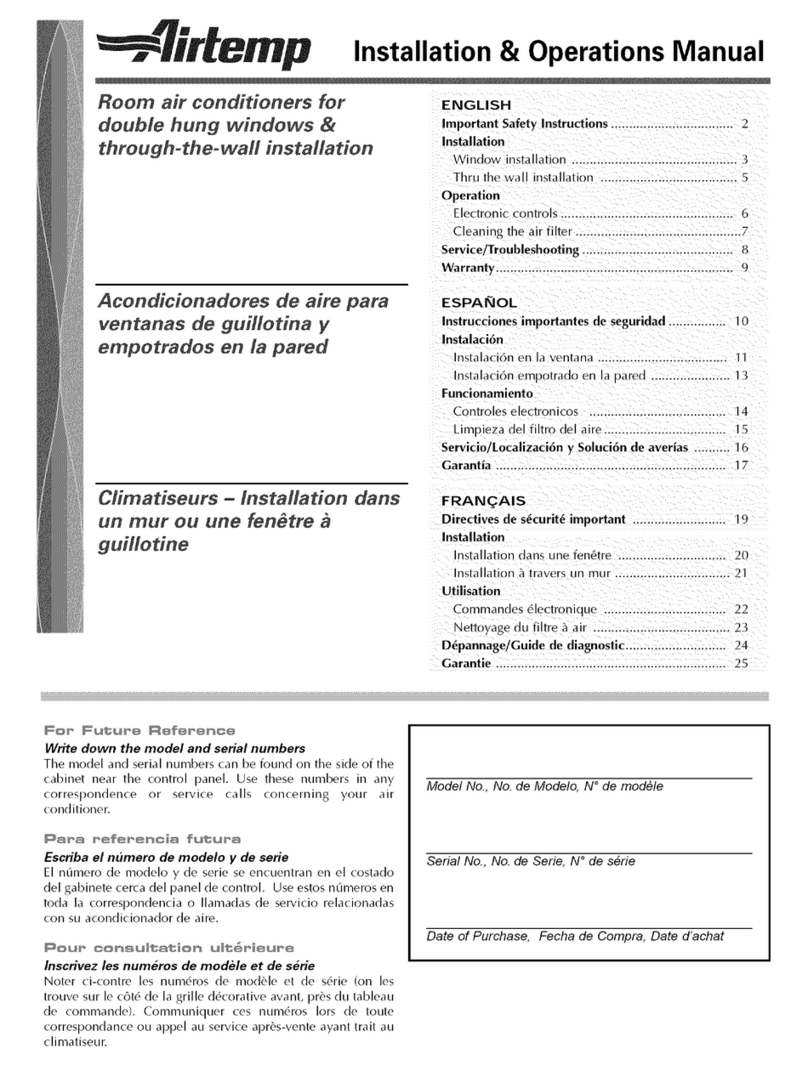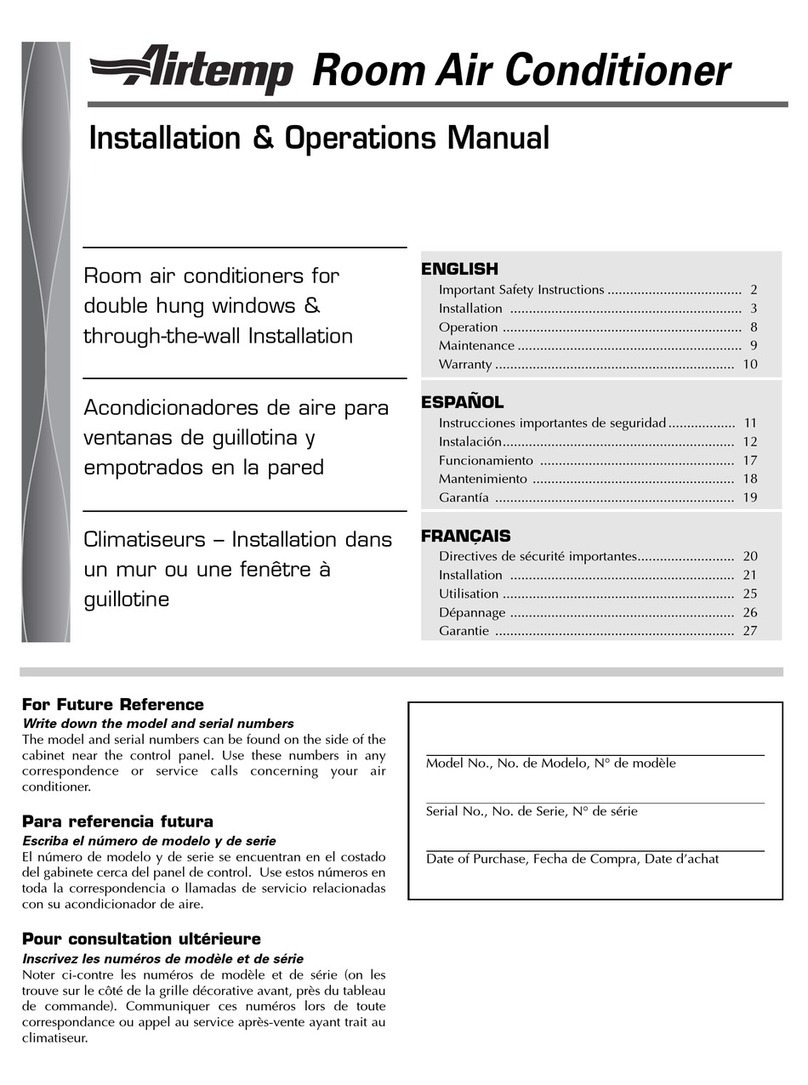Limited Warranty
(Within the 48 contiguous United States, State of Hawaii, the
District of Columbia, Puerto Rico and Canada).
Full (Five Year) Parts and Labor Warranty
During the first five years after the original date of purchase, CareCo
will, through it's authorized servicers and free of charge to the
owner or any subsequent owner, repair or replace any parts which
are defective in material or workmanship due to normal use. Ready
access to the air conditioner is the responsibility of the owner.
Note: In the event of any required parts replacement within the
period of this warranty, CareCo replacement parts shall be used and
will be warranted only for the period remaining on the original
warranty.
Exceptions
The above warranty does not cover failure to function caused by
damage to the unit while in your possession (other than damage
caused by defect or malfunction), or by it's improper installation, or
by unreasonable use of the unit, including without limitation, failure
to provide reasonable and necessary maintenance or to adhere to
the written Installation and Operating Instructions. If the unit is put
to commercial, business, rental, or other use or application other
than for consumer use, we make no warranties, express or implied.
Including but not limited to, any implied warranty of
merchantability or fitness for a particular use or purpose.
THE REMEDIES PROVIDED FOR IN THE ABOVE EXPRESS
WARRANTY ARE THE SOLE AND EXCLUSIVE REMEDIES
THEREFORE, NO OTHER EXPRESS WARRANTIES ARE MADE. ALL
IMPLIED WARRANTIES, INCLUDING BUT NOT LIMITED TO ANY
IMPLIED WARRANTY OF MERCHANTABILITY OR FITNESS FOR A
PARTICULAR USE OR PURPOSE, ARE LIMITED IN DURATION TO
FIVE YEARS FROM THE DATE OF ORIGINAL PURCHASE. IN NO
EVENT SHALL CARECO BE LIABLE FOR INDIRECT, INCIDENTAL,
OR CONSEQUENTIAL DAMAGES, EVEN IF ADVISED IN
ADVANCE OF THE POSSIBILITY OF SUCH DAMAGES. NO
WARRANTIES, EXPRESS OR IMPLIED, ARE MADE TO ANY BUYER
UPON RESALE.
Important Information
Some states do not allow limitations on how long an implied
warranty lasts or do not allow the exclusion or limitation of
incidental or consequential damages, so the above limitations or
exclusions may not apply to you. This warranty gives you specific
legal rights and you may also have other rights which vary from
state to state.
Administered By:
CareCo • 415 Wabash Avenue • Effingham, IL 62401
How to Obtain Warranty Service
Service for your Room Air Conditioner will be provided by
CareCo through its network of Authorized Independent
Servicers nationwide.
Note: Before calling for service, carefully read the
"Installation and Operating Instructions" booklet. Then if you
need service:
1. Call a CareCo authorized service contractor and advise of
the model number, serial number, date of purchase and the
nature of your complaint. Service will be provided during
normal working hours. Contact your dealer for the name of
an authorized service contractor, if unknown to you.
2. If your dealer is unable to give you the name of a service
contractor or if you need other assistance, call CareCo at
1-800-332-6658
or write:
CareCo
415 Wabash Avenue
Effingham, IL 62401
Proof of Purchase Date
It is the responsibility of the consumer to establish the
original purchase date for warranty purposes. We
recommend that a bill of sale, canceled check or some other
appropriate payment record be kept for that purpose.































